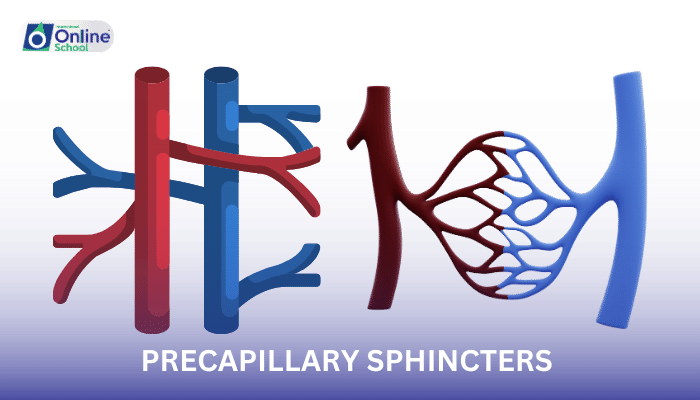
Learning Outcomes:
i. Define precapillary sphincters and explain their role in regulating blood flow through capillaries.
ii. Describe the structure and location of precapillary sphincters within the circulatory system.
iii. Explain the mechanisms by which precapillary sphincters control blood flow to capillaries, including their ability to open and close.
iv. Discuss the factors that influence precapillary sphincter contraction and relaxation, such as metabolic demands of local tissues and chemical signals.
v. Recognize the significance of precapillary sphincters in maintaining optimal blood flow and preventing capillary damage.
i. Precapillary Sphincters: The Fine-Tuners of Capillary Flow
Precapillary sphincters, also known as true capillaries, are specialized smooth muscle cells located at the junction between arterioles and capillaries. They act as gatekeepers, regulating the flow of blood into individual capillaries, ensuring that blood is distributed efficiently and that capillary perfusion is maintained.
ii. Structure and Location: A Strategic Placement
Precapillary sphincters are strategically positioned at the entrances of capillaries, allowing them to control which capillaries receive blood flow:
Structure: Precapillary sphincters are composed of a few concentric layers of smooth muscle cells. These muscle cells can contract and relax, altering the size of the opening to the capillary.
Location: Precapillary sphincters are found at the junction between arterioles and capillaries, where they can regulate the flow of blood entering the capillary bed.
iii. Mechanisms of Control: Opening and Closing the Gates
Precapillary sphincters control blood flow to capillaries by opening and closing their narrow openings:
Constriction: When precapillary sphincters contract, their opening narrows, reducing or even completely stopping blood flow to the associated capillary.
Dilation: When precapillary sphincters relax, their opening widens, allowing more blood to flow into the capillary.
iv. Factors Influencing Sphincter Activity: Responding to Tissue Needs and Chemical Cues
The activity of precapillary sphincters is influenced by a variety of factors, ensuring that blood flow matches the metabolic demands of local tissues:
Metabolic demands: Tissues with higher metabolic needs, such as active muscles or organs during digestion, require increased blood flow. This increased metabolic demand signals precapillary sphincters to relax, allowing more blood to enter the capillaries supplying those tissues.
Chemical signals: Various chemicals, such as metabolites, hormones, and inflammatory mediators, can also influence precapillary sphincter contraction or relaxation. For instance, carbon dioxide, a waste product of cellular respiration, can cause precapillary sphincters to dilate, allowing more oxygenated blood to reach the tissues.
Significance of Precapillary Sphincters: Guardians of Capillary Health
Precapillary sphincters play a crucial role in maintaining optimal blood flow and preventing capillary damage:
Efficient blood distribution: Precapillary sphincters ensure that blood is distributed efficiently to the capillaries, matching blood flow to the metabolic needs of different tissues.
Capillary protection: Precapillary sphincters prevent excessive blood flow to capillaries, protecting them from damage caused by high pressures or excessive flow.
Precapillary sphincters, though small in size, are essential components of the circulatory system. Their ability to open and close, regulated by metabolic demands and chemical signals, ensures that blood is distributed efficiently to capillaries and that these delicate vessels are protected from excessive pressure or flow. Understanding the structure, function, and significance of precapillary sphincters provides valuable insights into the intricate workings of the circulatory system and the importance of maintaining healthy capillaries for overall cardiovascular health.